Now that all of our April showers have passed, it’s time to start thinking about what to plant in May. This month is one of the best months to get your garden going, as it offers reliable weather, budding plants, and an increase in pollinators! While knowing your Hardiness Zone is necessary for a successful garden, May is a great month to put shovel to soil.
When it comes to what to plant in May, you should pay special attention to your local weather and ensure that no atypical frost days are forecasted. If you’re in the clear when it comes to freezing temperatures, nearly everything can be planted in May including flowering shrubs, trees, and summer flower bulbs. Most vegetables are safe to get planted as well, though make sure to take the time to harden off any seedlings you started indoors during previous months!
From strawberries to tomatoes to coleus, May is the perfect month to dive headfirst into your garden. Grab your gloves and a hose, and let’s get started with some of the best planting options for a May garden!
What to Plant in May: The Complete Guide
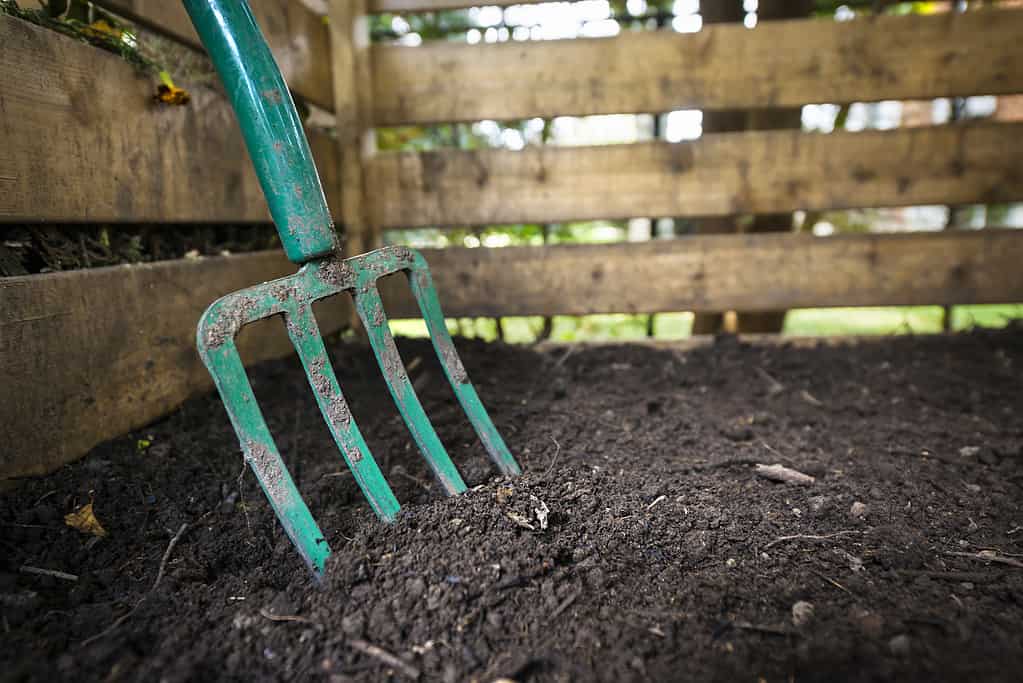
Many crops planted in May are extremely sensitive to frost conditions.
©Elena Elisseeva/Shutterstock.com
Unless you live in Hardiness Zone 3-5, a May garden is a garden in full swing. In some cooler regions, you may still want to watch your weather carefully. Many crops planted in May are extremely sensitive to frost conditions. However, starting plants in containers or greenhouses may help you get things started even if cold weather persists until June!
With all of this in mind, let’s start with what May is known for after all of those April showers: flowers!
What to Plant in May: Flowers
You’ve likely noticed all of the spring bulbs blooming and greeting the sun now that it’s May. There are still plenty of flowers that you can plant right now for a beautiful, cheery garden throughout the summertime! Let’s check out some favorites.
Lavender

Overwatering is the main cause of death in lavender.
©blueeyes/Shutterstock.com
Both a fantastic herb and a summertime fragrant flower, lavender can be planted in the month of May. All types of lavender, from French to English and anywhere in between, need fast-draining soil and full sunshine in order to thrive. Overwatering is the main cause of death in lavender, and a bit of sand in your soil may help prevent this flower’s roots from rotting. Lavender can be found in many varieties and sizes, though all types have their trademark scent!
Calla Lilies

Available in a variety of colors, calla lilies can be treated as annuals or perennials.
©Veronika_22/Shutterstock.com
The planting location of your calla lily tubers is essential, as these delicate blooms may need some partial shade if you live in a hot locale. Available in a variety of colors, calla lilies can be treated as annuals or perennials, depending on where you live. Zones 8-10 have the best chances of growing these blooms perennially. While overwatering is always possible, calla lilies prefer consistently moist soil and plenty of organic matter to feed on throughout their growth period.
Begonias
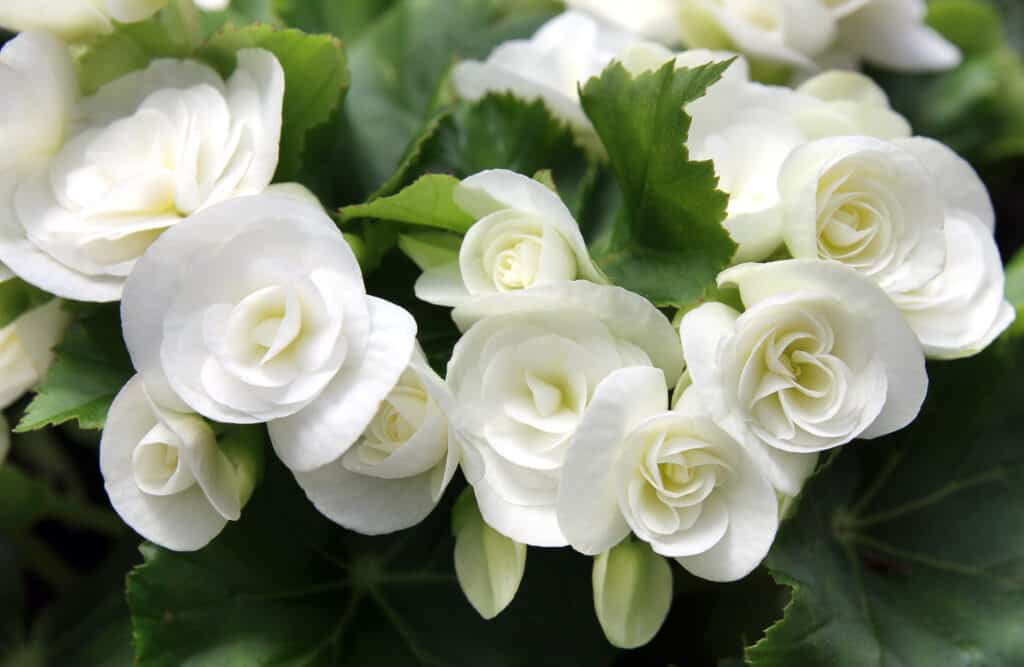
Capable of growing in containers, hanging baskets, and borders, begonias offer you plenty of choices.
©Opachevsky Irina/Shutterstock.com
There are enough different types of begonias to make your head spin. This includes foliage begonias, hardy begonias, wax begonias, and more. All types can be planted during the month of May, though make sure your frosts have passed first. This is a flower that prefers partial shade and may need some protection during the summer months. Capable of growing in containers, hanging baskets, and borders, begonias offer you plenty of choices and the opportunity to get creative. They produce beautiful flowers so long as they are regularly fed!
Zinnias

Just like begonias, zinnias thrive when given plenty of organic matter to feed upon.
©Thamrong Chunivarawat/Shutterstock.com
An easy flower to establish and care for, zinnias can be directly sown from seed during May. This cheery bloom thrives in full sun and may in fact be more susceptible to disease when grown in shade. Just like begonias, zinnias thrive when given plenty of organic matter to feed upon, producing rounded flower heads month after month until frosts occur! You can also find zinnia starts at your local garden center, giving you plenty of color options to choose from.
Catmint
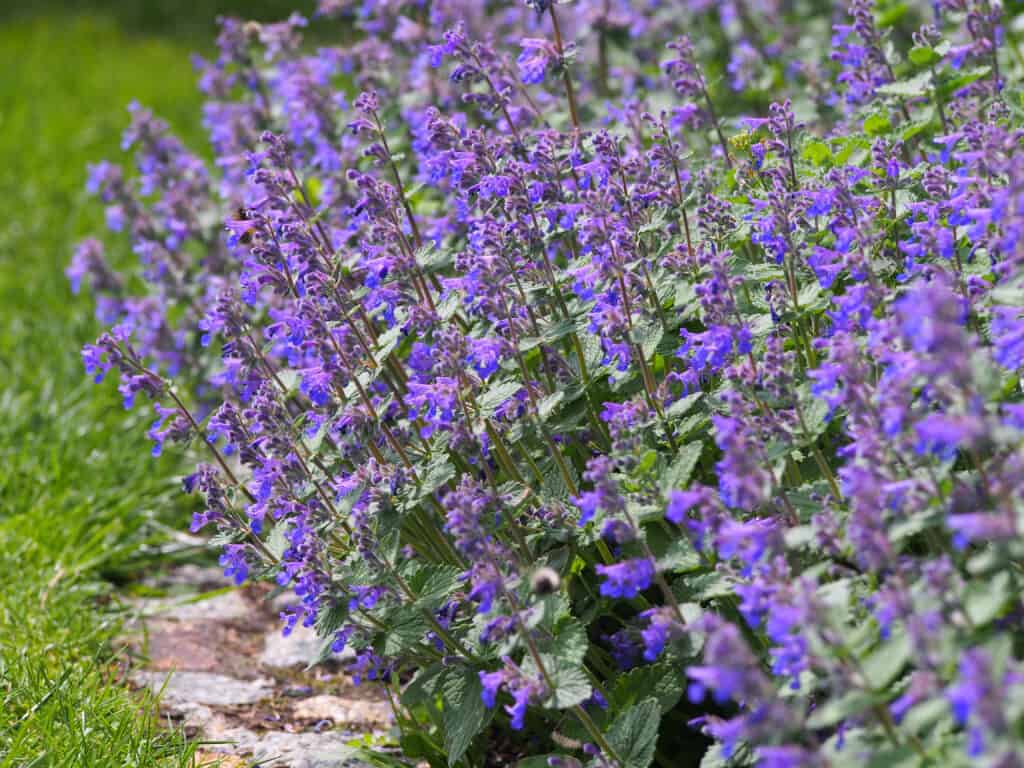
With attractive gray foliage and flowers that look similar to lavender, catmint is a popular shrub.
©Anna Gratys/Shutterstock.com
Catmint is a member of the same family as catnip and will indeed attract your neighborhood cats! However, it is extremely easy to grow, hardy in Zones 4-8, and deters deer from your garden. With attractive gray foliage and flowers that look similar to lavender, catmint is a popular shrub. Some varieties have a trailing or upright growth habit, depending on what you are looking for. Just be sure to plant in full sunshine and water frequently when first planted!
Peonies
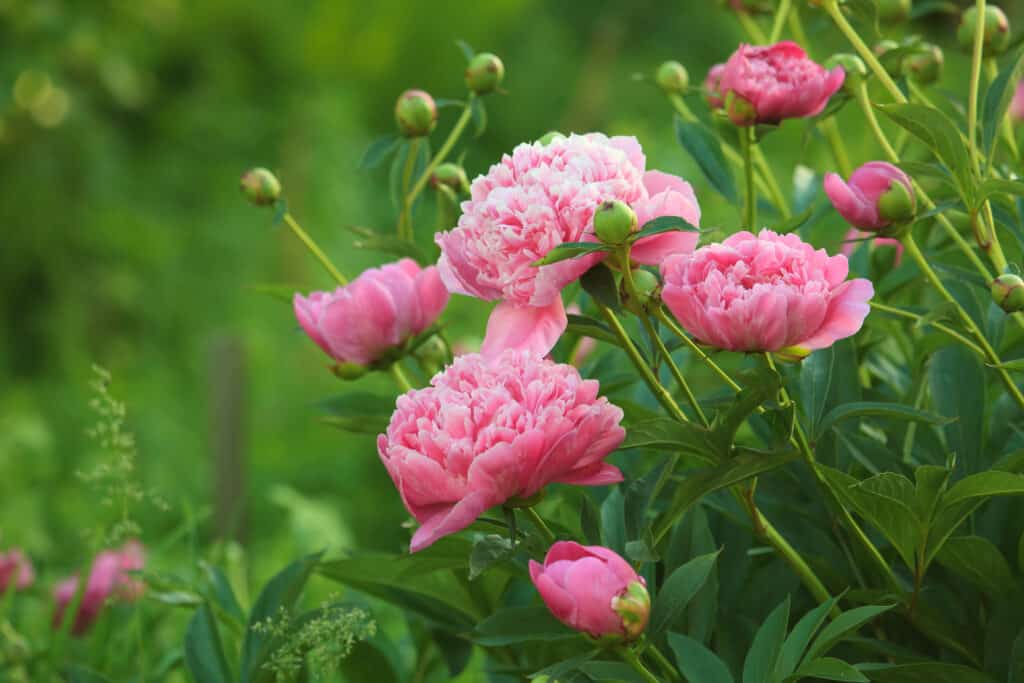
One of the longest-living flower varieties out there, peonies crave full sunshine.
©iStock.com/Birute
While peonies often thrive best when planted in fall, some peony varieties prefer spring planting, so be sure you know which type you have! One of the longest-living flower varieties out there, peonies crave full sunshine and a solitary location away from other plants. They need as many nutrients as possible to produce their beautiful flowers (there are so many different types!), and peonies bloom through the summer in Zones 3-9.
What to Plant in May: Vegetables
May is the month that most people begin their vegetable gardens in earnest, as many crops need warmer soils in order to grow properly. Even if you live in a colder Zone, you can still start a number of vegetables outdoors during this month, so long as you offer them some protection. Here are only a handful of vegetables that you can plant in May.
Tomatoes

You can’t start tomato plants from seed in May.
©Dr.E.Srinivas/Shutterstock.com
If you’ve been waiting for the weather to warm up enough for your tomato plants, May is the month for you! There are countless varieties of tomatoes to choose from, but all varieties need full sunshine in order to produce. You can’t start tomato plants from seed in May as this is likely too late in their growing season (tomatoes need a long time to mature). However, you can purchase tomato starts from a garden center and plant them outside once your average temperature is over 60 degrees Fahrenheit. Just make sure to harden them off first!
Peppers
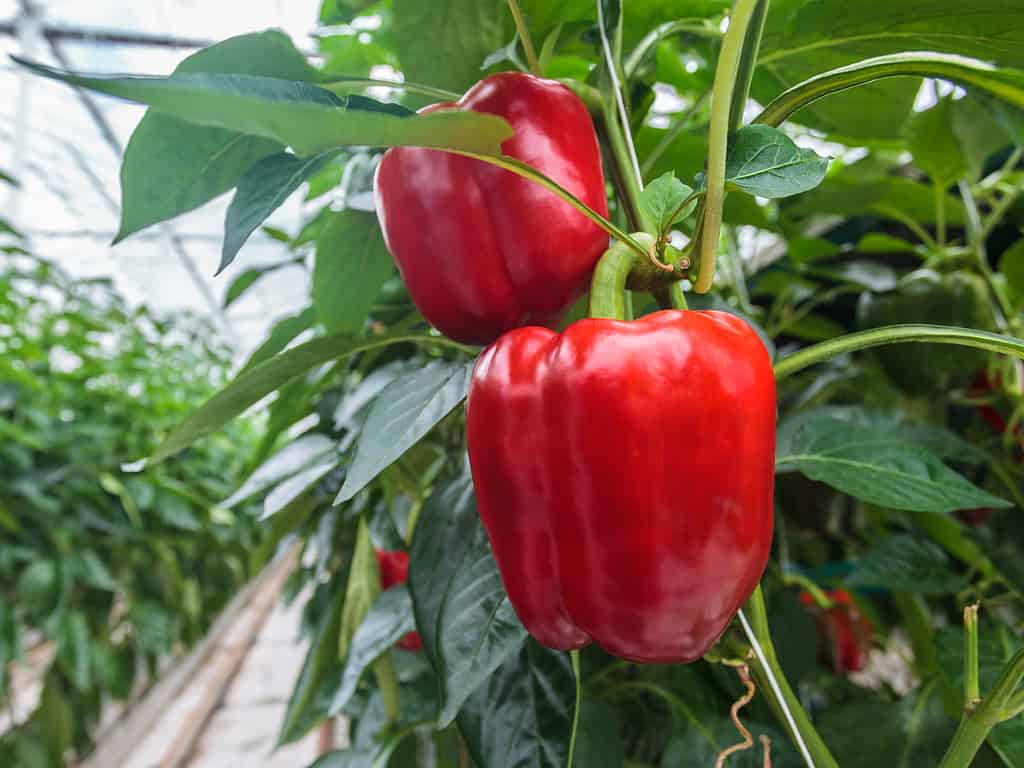
Depending on the type, many pepper plants will continue producing until the first frost in the fall.
©iStock.com/DutchScenery
Just like tomatoes, pepper plants can be planted in May from established starts. This is also a crop that prefers full sunshine and needs more time to grow than the average vegetable. However, pepper plants come in more varieties than you may think, capable of growing in containers and garden beds so long as they have well-draining soil and adequate light. Depending on the type, many pepper plants will continue producing until the first frost in the fall.
Squash
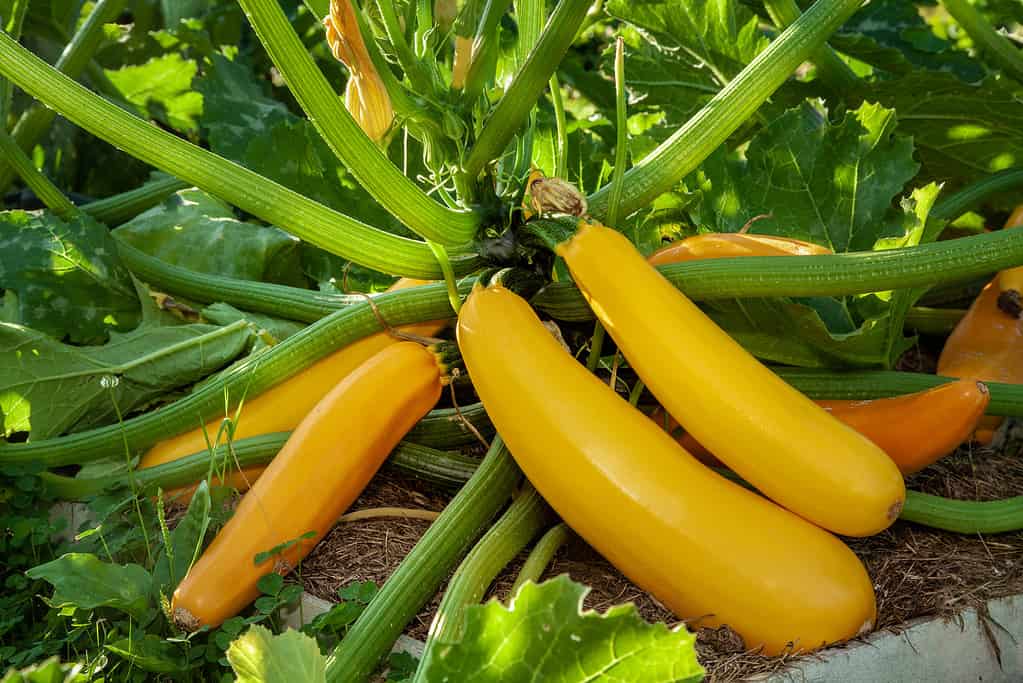
Remember that all squash plants need plenty of space to grow.
©Zhukovskaya Elena/Shutterstock.com
No matter the type of squash you want to plant, most varieties should be planted once all frost dangers have passed in your local area. There are a number of winter squash varieties that should be planted in midsummer, but zucchini, yellow crookneck, and gray squash can all be planted in spring from established plants. Remember that all squash plants need plenty of space to grow, so separate your crops by at least 3 ft, if not 6 ft! Compost and mulch will be paramount to helping your squash grow, as well as full sunshine.
Melons

No matter what type of melon you want to grow, you need to ensure that your soil temperatures are above 65° Fahrenheit before planting.
©The Image Party/Shutterstock.com
Cantaloupe, honeydew, and watermelons are like squash in that they need plenty of space to grow. However, some gardeners prefer to trellis their melon crops to save on space and create more verticality in a garden. No matter what type of melon you want to grow, you need to ensure that your soil temperatures are above 65° Fahrenheit before planting. Full sunshine and well-draining soil are also important for the health of your melon plants, as they grow sweeter in more sunshine!
Pumpkins
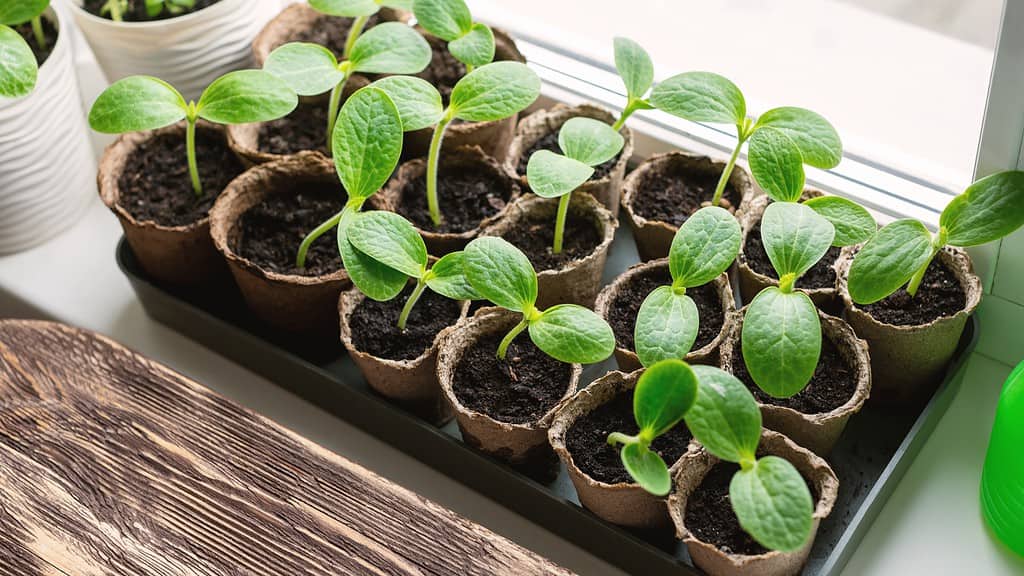
You should plant your pumpkin seeds or starts in a mounded area.
©n.k.junky/Shutterstock.com
Depending on where you live, you may want to plant pumpkins during the month of May. Like melons and other squashes, pumpkins need warm soil, growing best when planted in early summer. You should plant your pumpkin seeds or starts in a mounded area full of organic material, and, of course, in full sunshine. Pumpkins also need plenty of space to spread out, so be sure to dedicate plenty of room for your pumpkin patch! Finally, water at the base of the plant rather than from above, as this will help you avoid rotting foliage.
Carrots

Carrots can be continually sown in early spring.
©iStock.com/hachiware
Preferring to be planted directly from seed where they will be grown, carrots can be continually sown in early spring. Keep in mind that temperatures above 75 to 80 degrees Fahrenheit consistently may produce bitter or small carrots, so timing is everything with this crop. However, carrots enjoy well-draining soil with some sandy elements incorporated, and they do well in raised beds and containers equally.
Corn
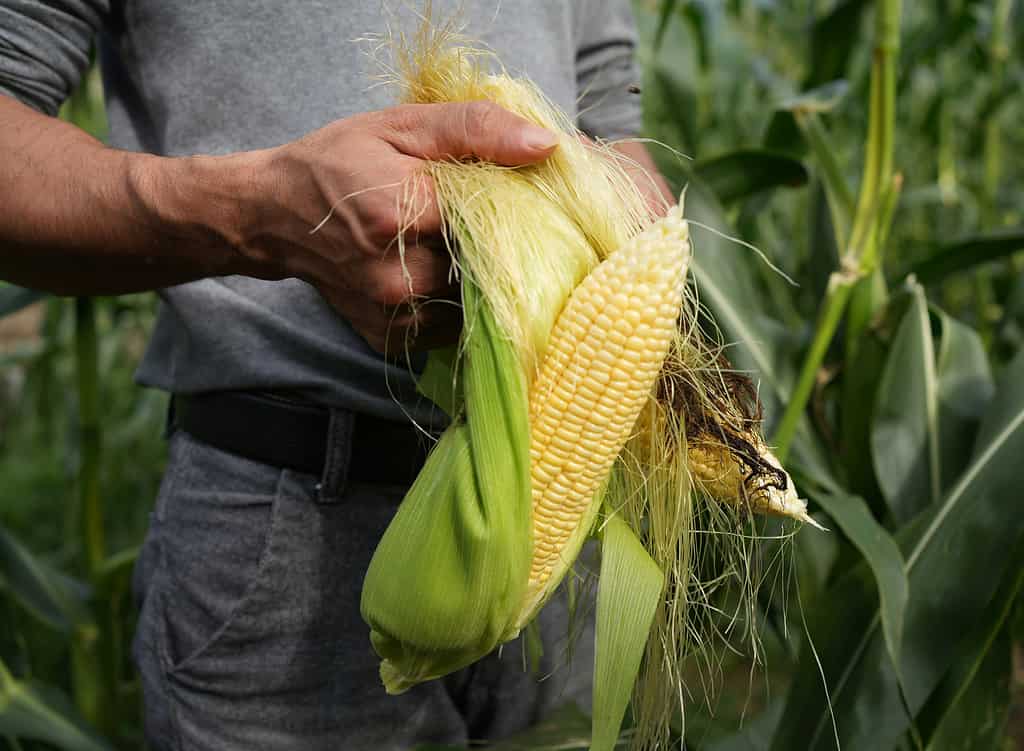
Corn needs plenty of food throughout its growing season as well as full sunshine.
©iStock.com/Qin PinLi
Given that corn gets pollinated from breezes and windy conditions, planting and spacing your corn crops are key. You should start your corn once all frost dangers have passed, spacing them 12 inches apart. Corn needs plenty of food throughout its growing season as well as full sunshine. Watering your corn is also important, and you’ll know if your crop needs more food or water if the leaves are turning light green as opposed to dark green. Most corn plants produce two cobs on average, so keep this in mind when planning your garden.
Brussels Sprouts

You can likely start your Brussels sprouts from seed in May.
©Anton Havelaar/Shutterstock.com
Most Brussels sprouts are harvested in late summer or fall, depending on your Hardiness Zone. That’s why you can likely start your Brussels sprouts from seed, planted directly outside, during the month of May. However, a raised bed may be a good idea if you are still experiencing cold temperatures, as this may delay germination. Brussels sprouts should be spaced every three to four inches when planted from seed, thinning your crops so that there is a foot between each plant once they have grown a few inches. This is also a plant that loves compost and plenty of water!
Eggplant
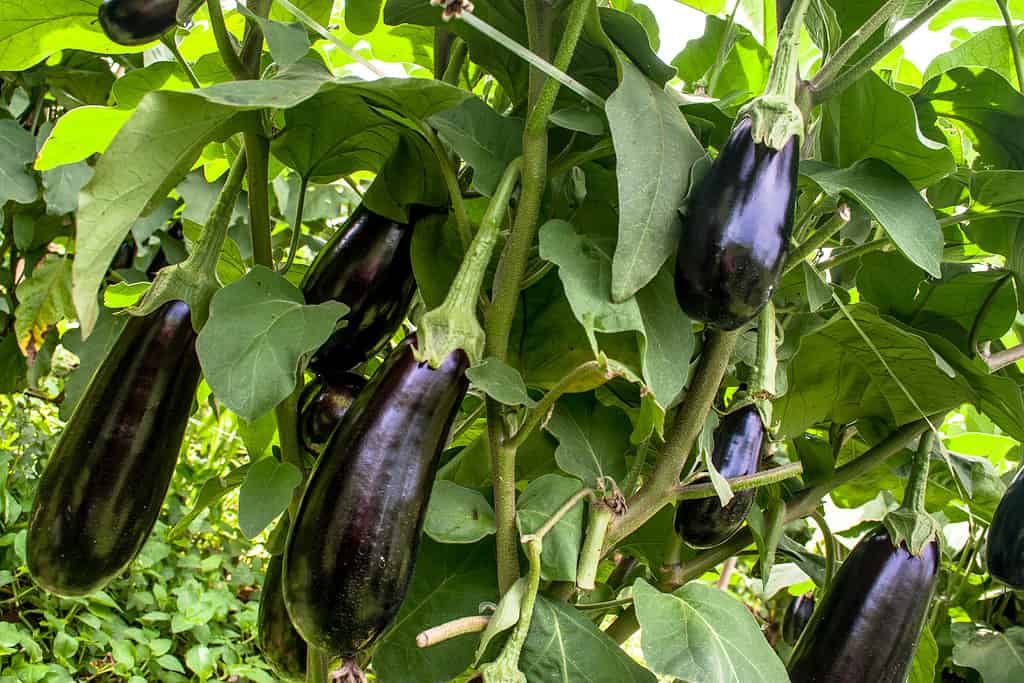
Eggplants are susceptible to cold temperatures.
©Alf Ribeiro/Shutterstock.com
You’ll be better off if you purchase an established eggplant seedling from your local garden center rather than planting these purplish crops from seed. Eggplants do best in full sunshine and need to be watered consistently to avoid misshapen fruit. You will also need to give your eggplant crops some structural support, as they have the propensity to fall over once they start producing. Eggplants are susceptible to cold temperatures, so they may need some protection during the early days after planting.
What to Plant in May: Anything Grows!
Unless you live in a particularly volatile or cold Zone, May is a fantastic month for planting just about anything. While some plants do best when started in the fall, there are many other greens that you can plant during May besides flowers and vegetables. Here are some other plants to consider growing, from shrubs to berries.
Berry Plants (All Types!)
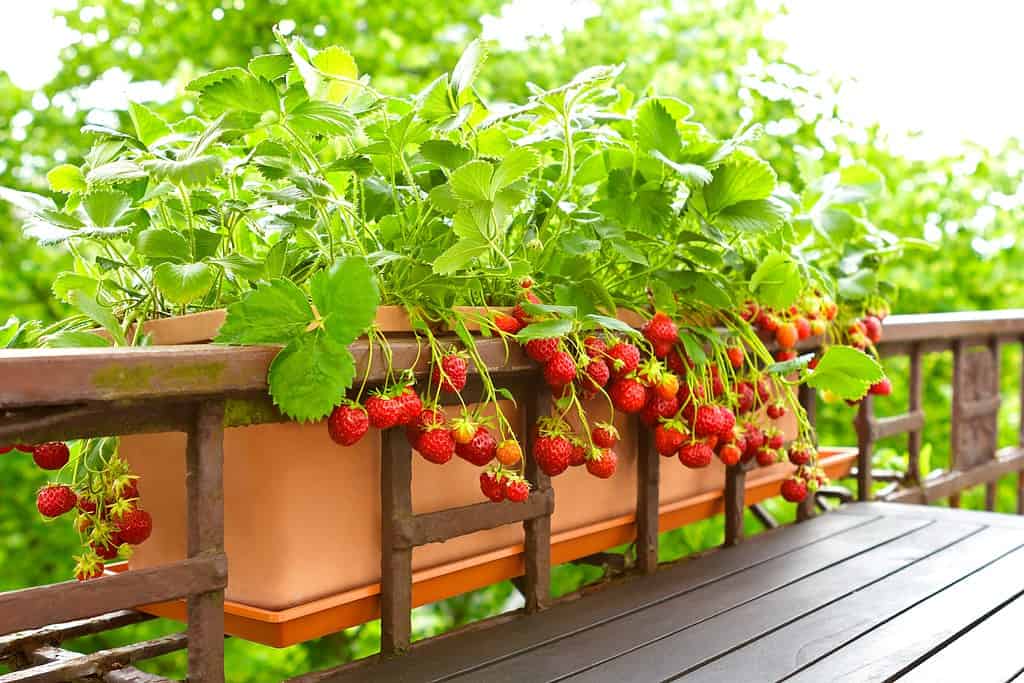
Most berry bushes prefer full sunshine, but make sure to check on your specific plant before committing.
©Agenturfotografin/Shutterstock.com
No matter what type of berry you want to grow, nearly all varieties can be planted during the month of May. This includes strawberries, blueberries, blackberries, and raspberries. Depending on your region, you may also be able to grow specialty berries and hybrid berry varieties. Most berry bushes prefer full sunshine, but make sure to check on your specific plant before committing. In addition, some berry plants have the tendency to sprawl, with blackberries being the most notorious for this behavior. Pruning throughout the growing season might be a good idea!
Herbs (All Types!)
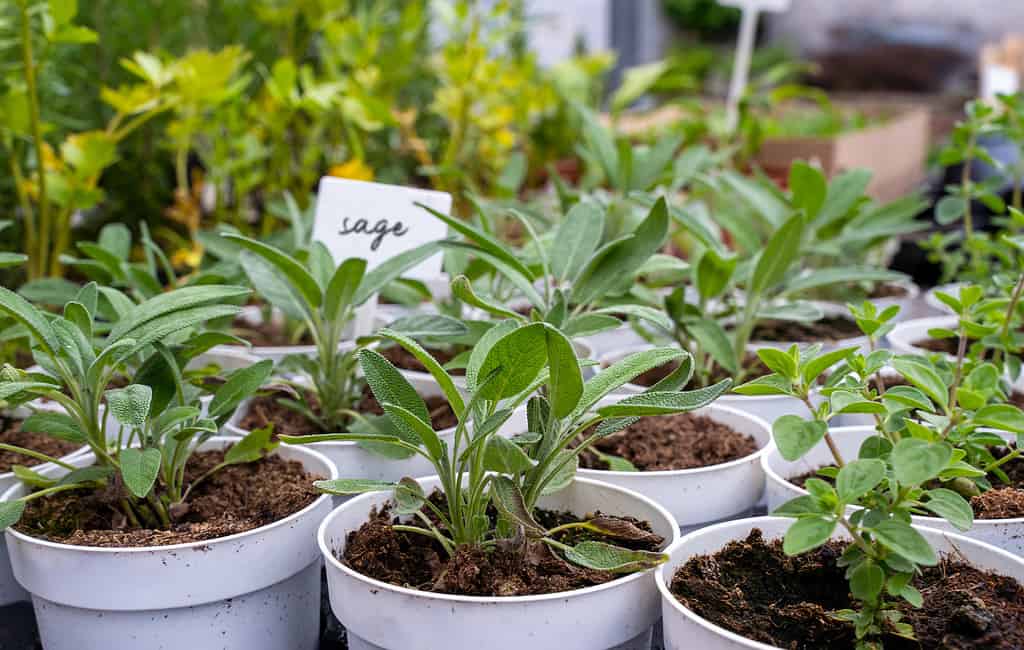
Basil, mint, dill, and rosemary are all fantastic choices for this time of year.
©iStock.com/creativeneko
While you can choose to grow them inside or out, all herbs can be planted outdoors as annuals (or perennials, depending on the plant and Zone) during the month of May. Basil, mint, dill, and rosemary are all fantastic choices for this time of year. They grow quickly and you can continually harvest from your herb plants, giving you plenty of greenery until the first frost occurs. Plus, herbs can grow in limited spaces, giving you the option to plant them in containers or compact areas.
Coleus
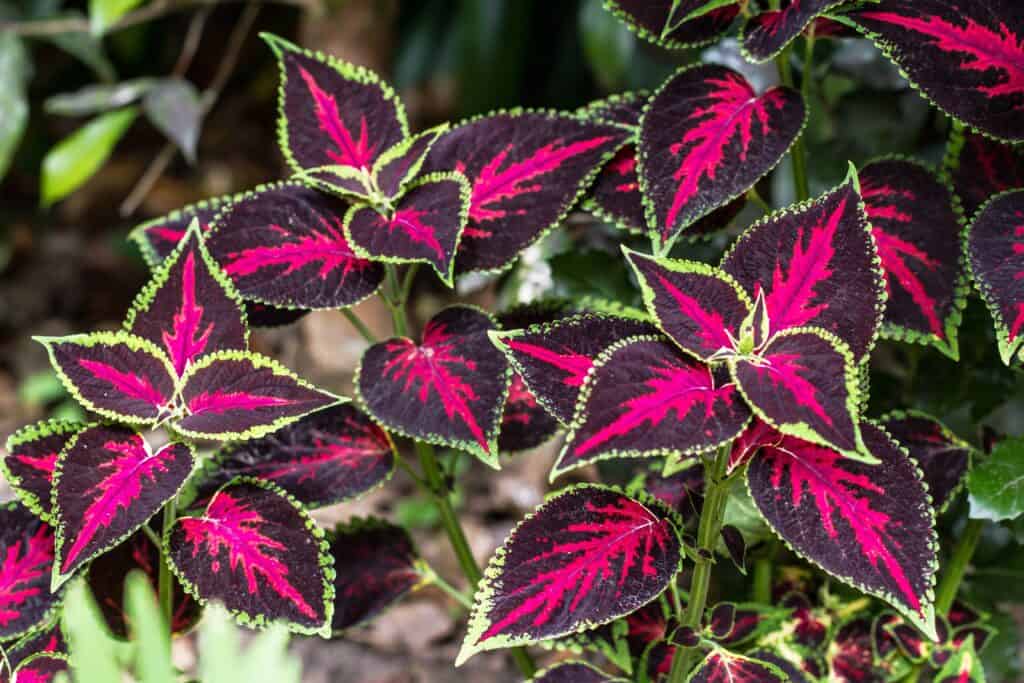
Depending on your region, your coleus plant may be either an annual or perennial.
©Dafinka/Shutterstock.com
If you find a coleus plant at your local garden center and are curious if it will survive in your garden, it’s worth giving it a try. Coleus plants are extremely hardy depending on the variety, often thriving in hot temperatures and partial shade. These shrub-like plants grow quickly, capable of reaching large sizes in a single season. Its foliage can be found in a variety of gorgeous shades and patterns. Depending on your region, your coleus plant may be either an annual or a perennial, as cold temperatures typically kill this popular border plant.
The photo featured at the top of this post is © Stanislav71/Shutterstock.com
Thank you for reading! Have some feedback for us? Contact the AZ Animals editorial team.






